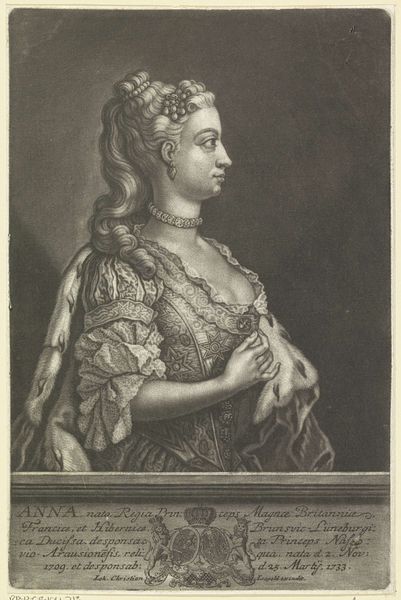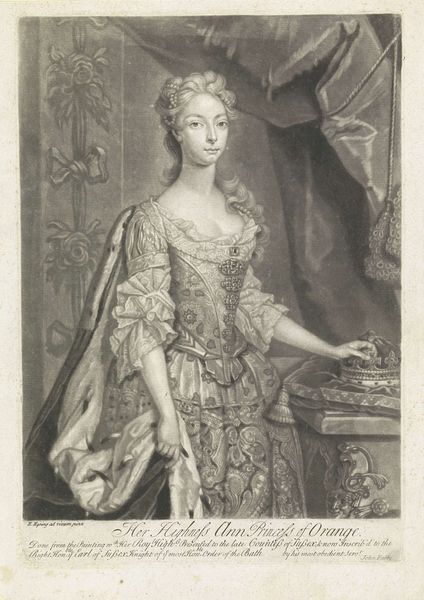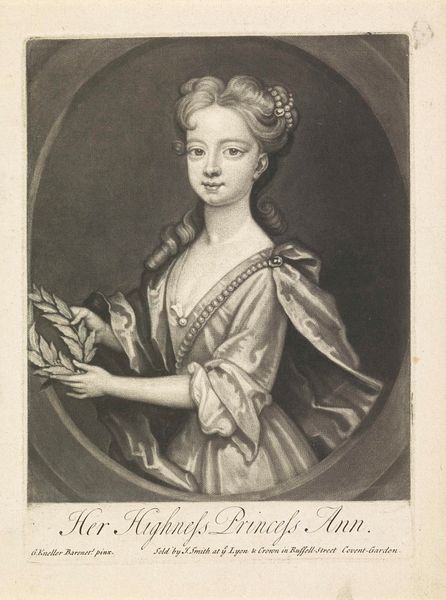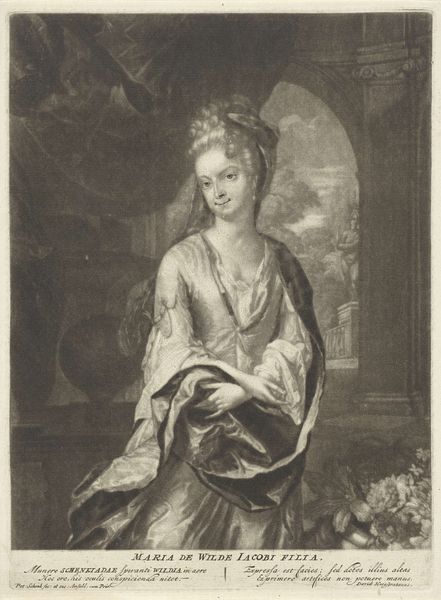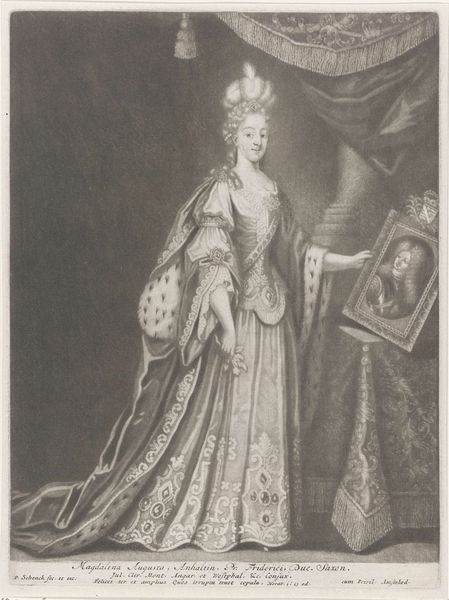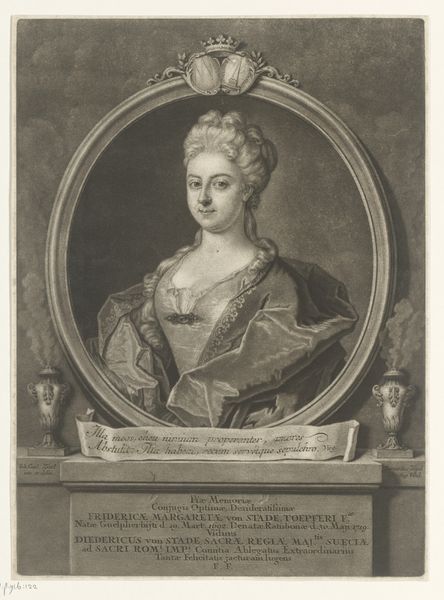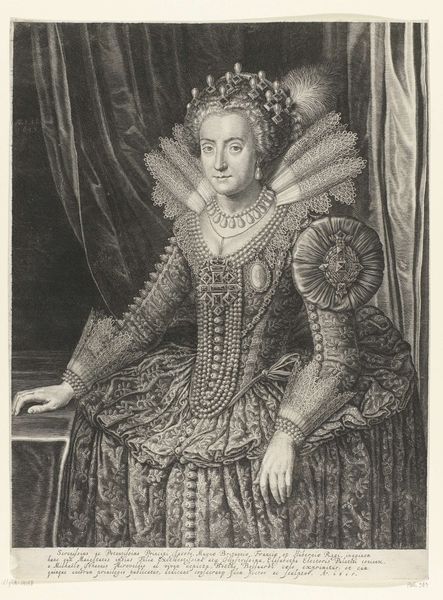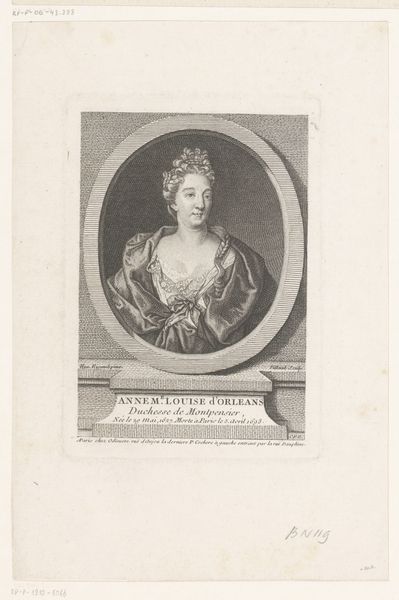
print, engraving
#
portrait
#
baroque
# print
#
old engraving style
#
limited contrast and shading
#
portrait drawing
#
history-painting
#
engraving
Dimensions: height 351 mm, width 250 mm
Copyright: Rijks Museum: Open Domain
Curator: John Faber the Younger created this engraving back in 1734, it’s titled "Portret van Anna van Hannover," or Portrait of Anna of Hanover. Editor: There's something so still about it, isn't there? Almost reverential. The limited shading gives it an ethereal quality, like she's emerging from a dream. Curator: I see what you mean, although, considering Anna’s position, it also strikes me as very much aligned with representations of royalty at the time. There's an idealization, certainly. I’m thinking of what royal portraiture meant politically – claiming space, status, projecting power, ensuring the succession, and visually communicating the dynasty’s history. Editor: Absolutely, but even within those constraints, there's a feeling, perhaps it is because it's not oil on canvas... the lines, being engraved... that softness gives the sitter an approachable quality, which, in this rendering, humanizes the Princess despite the grandeur. We should also talk about the gaze—she doesn’t quite meet ours. Curator: Exactly. Her averted gaze contributes to that sense of dignified detachment, though the baroque detail, from the elaborate hairstyle to the ermine stole, certainly reminds you of her standing. I find the engraving quite skilled in conveying the textures. Editor: Oh, indeed. Faber really captures the sheen of the jewels and the softness of the fur. The craftsmanship is stunning. Thinking about Anna’s biography, however, offers another lens through which to look at the image. Curator: Elaborate! Editor: She married William IV, Prince of Orange, solidifying an important alliance between Britain and the Netherlands, an act to ensure political stability and influence…So, how does that union and the subsequent expectations that are reflected in Anna's countenance change what we see in the portrait, especially since the ruling dynasties held so much sway over their subjects. The lack of deep contrasts speaks not just of artistic intention but societal control, wouldn't you agree? Curator: Well, I would say the low contrast suits both her characterization and the broader goal of demonstrating stable rule! It allows you to project. But on that note, this engraving speaks to a pivotal moment in European history, reminding us how portraiture, while seemingly simple, is loaded with meaning and tells stories about power, legacy, and even alliances. Editor: It makes you consider the individual versus the institution—and, of course, how much an image crafted nearly 300 years ago still provokes such complex questions!
Comments
No comments
Be the first to comment and join the conversation on the ultimate creative platform.
